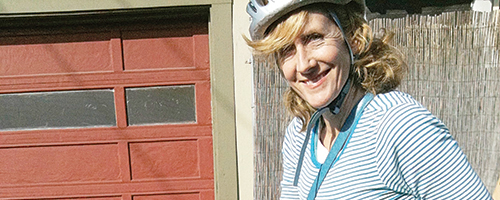An America you don’t see
LaLee’s Kin
Saturday, April 27, 7 p.m.
Sunday, April 26, 4:30 p.m.
Whitsell Auditorium
NW Film Center
“LaLee’s Kin” is the story of 62-year-old Laura Lee Wallace. She is the mother of 11, grandmother of 38, and great-grandmother of 15. It’s also the story of school administrator Reggie Barnes and his struggles. But most importantly it is the story of a place.
Tallahatchie County, Miss., is one of the poorest counties in the United States. Following the end of slavery, very little changed here. In the heart of the Mississippi Delta, the river continued to flood its banks year after year, replenishing the soil and keeping cotton king.
The end of the Civil War may have brought changes to the laws but not to the land. Sharecropping and tenant farming picked up where chattel slavery had ended, creating a permanent underclass as connected to the land as they had once been connected to their owners. The arrangements different, the results equally brutal.
LaLee, like her mother and grandmother before her, began picking cotton when she was six. She never learned to read and eventually became the matriarch of a sprawling family. And while cotton is still king, automation has changed its ruling style. Despite its criminally exploitive nature it’s all many Tallahatchie natives have.
In a government-furnished trailer with no running water LaLee provides for a number of her grandchildren and great-grandchildren. There is mention of the parents, but it’s never quite clear. Someone’s mother might be in Memphis, someone’s father went north somewhere. What we see instead is the remnants of the plantation system played out in its modern setting.
Reggie Barnes is involved with a struggle of his own. As administrator of the Tallahatchie County School District, it is his job to raise testing scores. It is a Tier One school – in the bottom percentile of performance in the state. Barnes is hard-nosed, but compassionate. It’s hard not to like him.
Tallahatchie is caught in the same conundrum many poor school districts are caught in, as Barnes explains it. State officials do not want to raise funding to schools not improving yet without funding improvement is impossible. Add to this the cultural bias of standardized testing and the adult illiteracy rate and students face a near impossibility.
Barnes remains a fighter. He recognizes the systemic faults and institutionalized racism that oppose him but that does not quiet his passion or pep talks.
This is what oftentimes makes this such compelling viewing. The filmmakers manage to capture a piece of America rarely seen, and that many seem to deny even exists, but do it without being exploitive. It can be difficult viewing but the subjects are captured with their dignity attached. This is done effectively because there are no overdubbed commentaries or explanations. We are hearing stories told directly to us, not interpreted.
Several troubling scenes occur between LaLee and her youngest son. He is seen rarely – in fact the startling lack of adult males in the community is troubling – what we usually see is LaLee going to ensure that he is still alive. As LaLee points out several times, in Tallahatchie boys go to school or they go to the penitentiary or they die young.
The film is unflinching in its account of Tallahatchie and offers no false hopes. But it does offer a sense of possibility. Before an assembly of screaming students Barnes announces they have reached Tier Two status, but this is merely the beginning. And LaLee’s great-granddaughter finishes the eighth grade at scholarship level.
While these small victories do little to alleviate the suffering of so many caught within a brutal and unrelenting system, it allows the viewer to truly understand the potential of Tallahatchie. And to ponder the system that has created it. And that is something many more Americans need to do.



